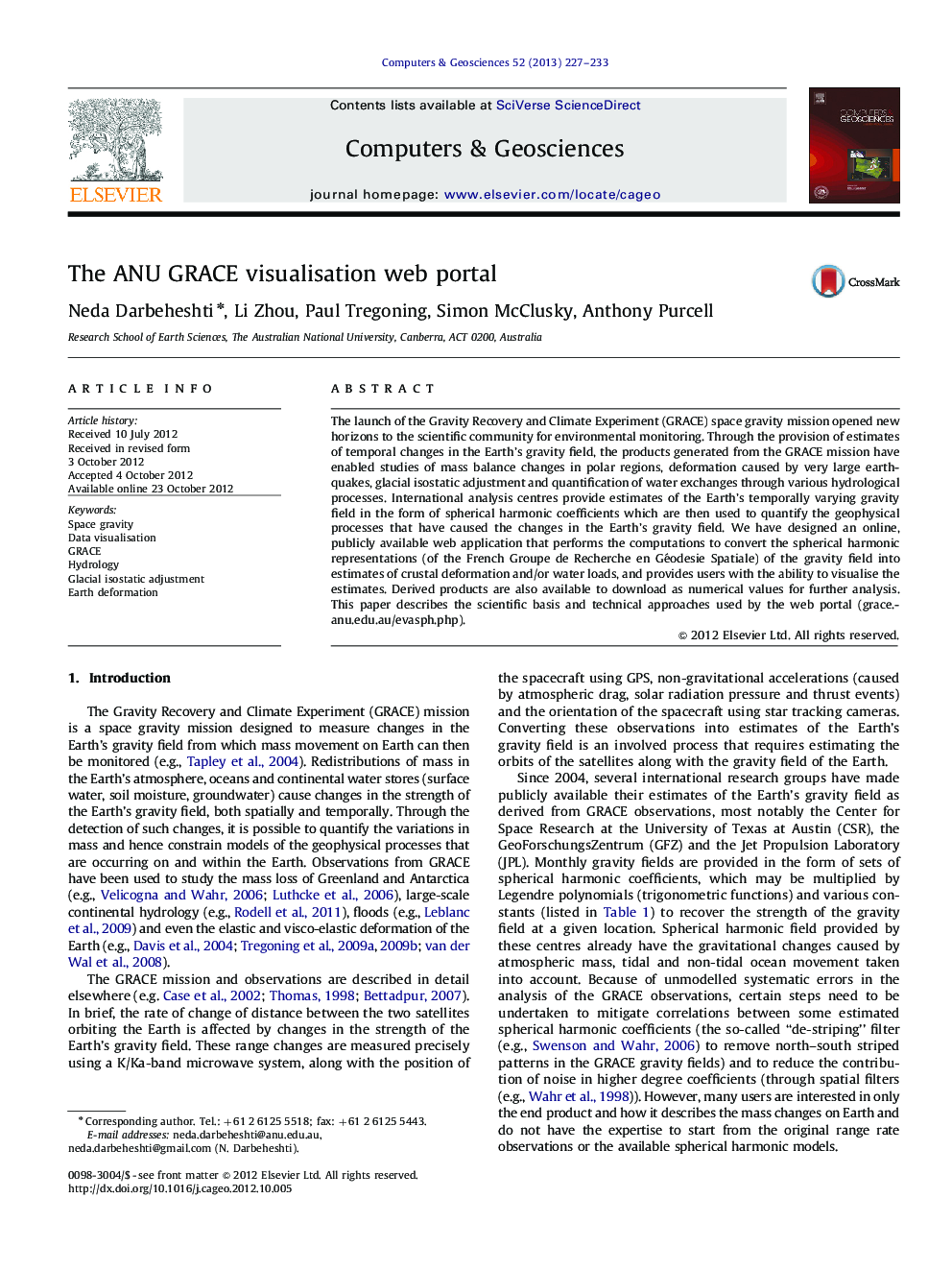| Article ID | Journal | Published Year | Pages | File Type |
|---|---|---|---|---|
| 507892 | Computers & Geosciences | 2013 | 7 Pages |
The launch of the Gravity Recovery and Climate Experiment (GRACE) space gravity mission opened new horizons to the scientific community for environmental monitoring. Through the provision of estimates of temporal changes in the Earth's gravity field, the products generated from the GRACE mission have enabled studies of mass balance changes in polar regions, deformation caused by very large earthquakes, glacial isostatic adjustment and quantification of water exchanges through various hydrological processes. International analysis centres provide estimates of the Earth's temporally varying gravity field in the form of spherical harmonic coefficients which are then used to quantify the geophysical processes that have caused the changes in the Earth's gravity field. We have designed an online, publicly available web application that performs the computations to convert the spherical harmonic representations (of the French Groupe de Recherche en Géodesie Spatiale) of the gravity field into estimates of crustal deformation and/or water loads, and provides users with the ability to visualise the estimates. Derived products are also available to download as numerical values for further analysis. This paper describes the scientific basis and technical approaches used by the web portal (grace.anu.edu.au/evasph.php).
► The website converts GRACE temporal gravity field into geophysical signals. ► It generates numerical results and plotted figures for users. ► It provides a user-friendly medium to study hydrology in drainage basins.
